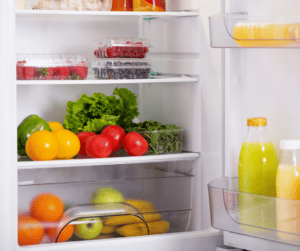Author
Roz Kalb , Psychologist
Close

22 Dec 2021 | ~2:40 Engagement Time
In general, the diet that’s healthy for a person with MS is the same diet that’s good for all of us.
Put simply by journalist Michael Pollan: “Eat [real] food, not too much, more plants.”
You might already have success with certain aspects of a healthy diet, but often, there are still some specific areas that we can improve upon. Your doctor might have identified these focus areas for you, or they may be based on how different foods make you feel.
Whether it’s achieving a healthy BMI, lowering your cholesterol, getting enough nutritious food for your activity level, or any other goal, here are five tools to help!
Setting goals sounds easy but achieving them often is not.
Too often, we say “I want to eat healthier meals,” “I want to lose weight,” or “I’m going to give up sweets.” And then we get discouraged when we don’t meet these goals.
The problem might be that you’re not setting SMART goals; they’re not specific, measurable, attainable, relevant, and timely.
Here are some examples of SMART goals:
SMART goals help you track your progress, hold yourself accountable, and actually achieve them!
Your goals should be relevant to your unique needs, and a nutrition specialist can help you create goals that are personalized and make sense for you (and your MS).
At the end of the specified time period, you can extend your goal if you’ve been successful or tweak your goal if it needs some adjustment.
And finally, be sure to put together a group of cheerleaders to support your efforts!
One approach to heart-healthy and nutritious food intake is the Mediterranean diet. You don’t necessarily need to eliminate anything; the key is filling up on the right foods and taking in others sparingly.
This is a handy graphic that shows you how to balance your food groups, and also provides suggestions for how much of each group you should take in each day.
Eating well is easier when you have healthy foods at home! It may seem obvious, but it’s easier said than done.
You’ll save money and reduce those guilty feelings from ordering takeout if your pantry is stocked with the foods you need. Mona Bostick, a registered dietitian who lives with MS, created a handy checklist to help you stock up for success.

Healthy eating can be delicious, full of variety, and easy. While it’s tempting to order takeout when cooking feels too daunting, remember that your body, tastebuds, and wallet will thank you if you whip up a delicious, healthy meal at home.
If you don’t have a lot of time or energy to cook, check out these meal ideas to inspire you!
Remember, an occupational therapist can also help you to come up with adaptations and ideas to make at-home cooking more accessible.

ChooseMyPlate.gov offers additional suggestions for creating a balanced meal. They have print-outs that make it wasy for you to see how you can mimic onto your own plate.
Food can be an enjoyable, nutritious, and healthy part of your life. We hope these tools help you get started!
To learn more, visit our Diet & Nutrition page!
Keep Learning